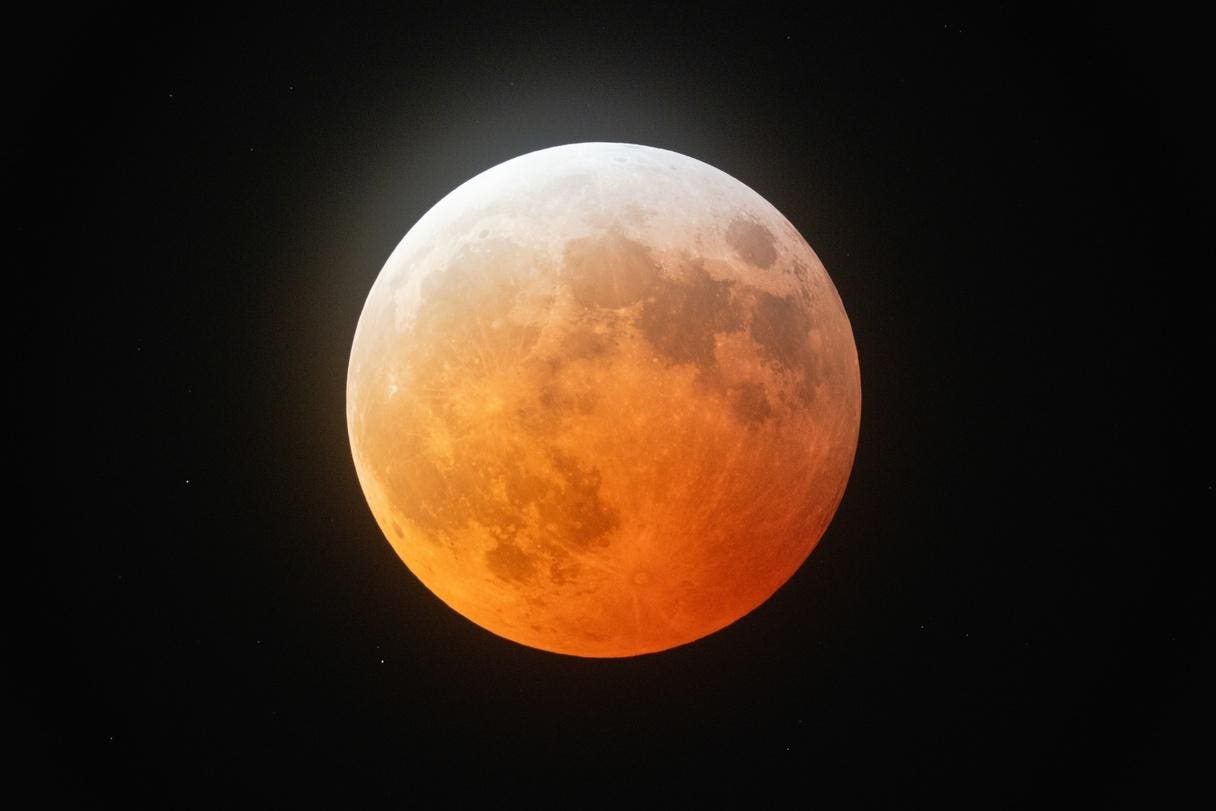The ‘Blood Worm Moon’ total lunar eclipse is seen above Austin, TX on March 14, 2025. (Photo by Rick Kern/Getty Images)
Getty Images
Each Monday, I pick out North America’s celestial highlights for the week ahead (which also apply to mid-northern latitudes in the Northern Hemisphere). Check my main feed for more in-depth articles on stargazing, astronomy, eclipses and more.
The Night Sky This Week: Sept. 1-7, 2025
September begins with planets and star clusters sharing the same field of view before dawn, and ends with a bright full moon, the Corn Moon, rising during dusk. With Venus, Mercury, and Jupiter gracing the morning sky and the night sky’s constellations heralding the shift toward fall, here’s everything you need to know about stargazing and astronomy this week:
Monday, Sept. 1: Beehive Cluster And Three Planets
Stellarium
Monday, Sept. 1: Beehive Cluster And Three Planets
About an hour and a half before sunrise, look low to the east-northeast to spot dazzling Venus nestled near the Beehive Cluster (M44) in Cancer. Around an hour before sunrise, Mercury rises below Venus, with Jupiter higher in the east — forming a gentle planetary line. Use binoculars to reveal the Beehive’s delicate stars and help find Mercury.
Tuesday, Sept. 2: Mercury And Regulus
Stellarium
Tuesday, Sept. 2: Mercury And Regulus
In its final dawn appearance of its present elongation, Mercury sidles up to Regulus, the brightest star in Leo. Regulus will be just to Mercury’s lower right, though you may need binoculars to find it in the haze of the horizon. The pairing glimmers low in the east an hour before sunrise, fading quickly in brightening twilight. You’ll need an unobstructed eastern horizon.
Wednesday, Sept. 3: Mars And Spica
Stellarium
Wednesday, Sept. 3: Mars And Spica
Shortly after sunset, look low in the west-southwest to find dimming Mars to the left of bright blue-white Spica in Virgo. Mars is heading toward solar conjunction in January and will not return to peak brightness until its opposition in February 2027.
This composite image shows a sequence, from bottom left to top left, of the moon’s transition during a total lunar eclipse on April 15, 2014 in Miami, Florida. People in most of north and south America should be able to witness this year’s first total lunar eclipse, which will cause a ‘blood moon’ and is the first of four in a rare Tetrad of eclipses over the next two years. (Photo by Joe Raedle/Getty Images)
Getty Images
Sunday, Sept. 7: Full Corn ‘Blood Moon’ Total Lunar Eclipse
September’s full moon rises shortly after sunset, glowing golden before climbing higher. This year it carries the Corn Moon name because the Harvest Moon this year falls in October (it’s the closest full moon to the equinox). While Asia, Australia, and parts of the Pacific will see a total lunar eclipse, North America misses out — but the rising full moon will still be a fine sight.
The times and dates given apply to mid-northern latitudes. For the most accurate location-specific information, consult online planetariums like Stellarium.
Wishing you clear skies and wide eyes.









